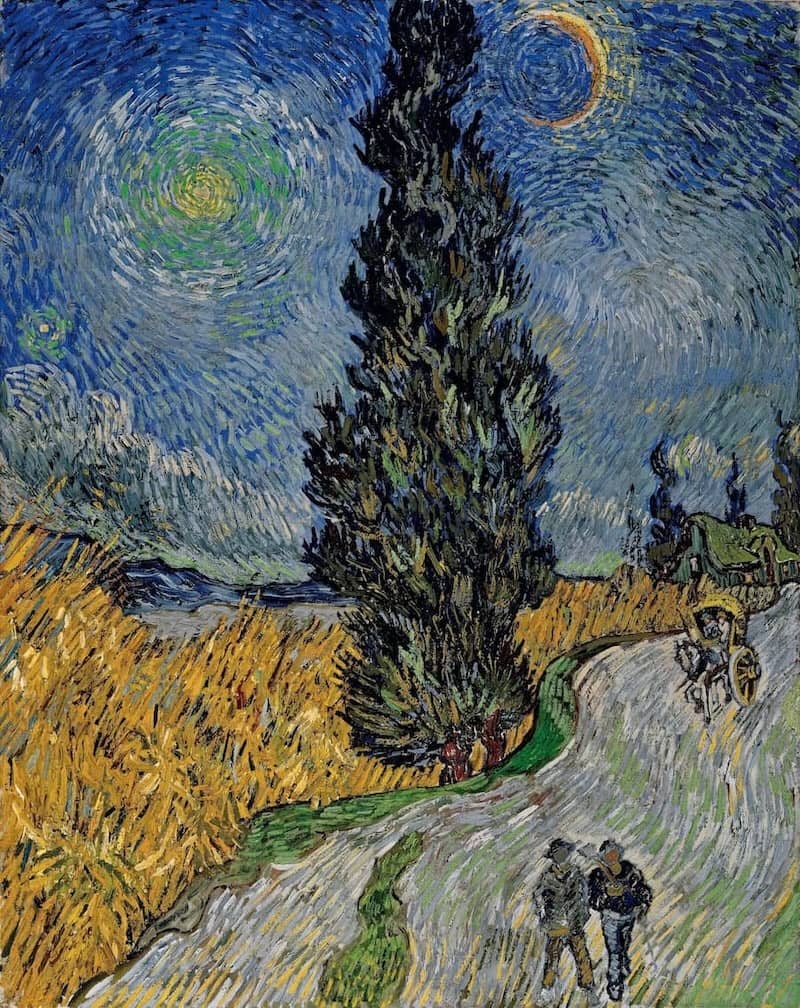Road with Cypress and Star, 1890 by Vincent van Gogh

The cypress tree was a motif that Van Gogh frequently used, although at first, he struggled to depict them. Their dominant form and dark colour mode them overpowering in a landscape, and dwarfed elements around them, which can be seen here in the relationship of the tree to the small figures. The broad path that winds up the canvas with a strangely distorted perspective also dominates the figures, appearing virtually to engulf them with its shining luminescence.
Why was Van Gogh investigating the roots of his practice at this date? This painting provides some clues. After leaving Holland and moving to France, Van Gogh had attempted to situate himself in relation to such Parisian painters as Bernard and Gauguin. He had corresponded and exchanged work with the former and, in a sense, studied with the latter in late 1888. He felt that they all three shared a dissatisfaction with Impressionism and its successors and a common purpose in creating what he called 'la peinture consolante' - painting of consolation. In June 1889 Van Gogh painted his famous painting The Starry Night, an imaginative composition, not painted from nature or the motif but composed from various sights and scenes of Brabant and Provence. He offered it to Bernard and Gauguin as his demonstration of a new form of religious painting. Both ignored the picture and thus overlooked Van Gogh's most ambitious painting in his French period, which had been conceived with reference to their joint concerns. Van Gogh responded to this cruel blow by angrily rejecting their work and the directions they had encouraged him to take. In June 1890, in a rare letter to Gauguin, Van Gogh mentioned Road with Cypress and Star. He called it a 'last attempt' at a star painting. It shares many features and motifs with the disregarded The Starry Night - a crescent moon, stars in the sky, Brabant cottages with lighted windows, a tall, solitary cypress. But there is no church; the theme has been 'secularized'. It is just a landscape with cottages, trees, wheatfields and workers. It signifies a decisive retrenchment and a rejection of his flirtation with the Paris vanguard.




















